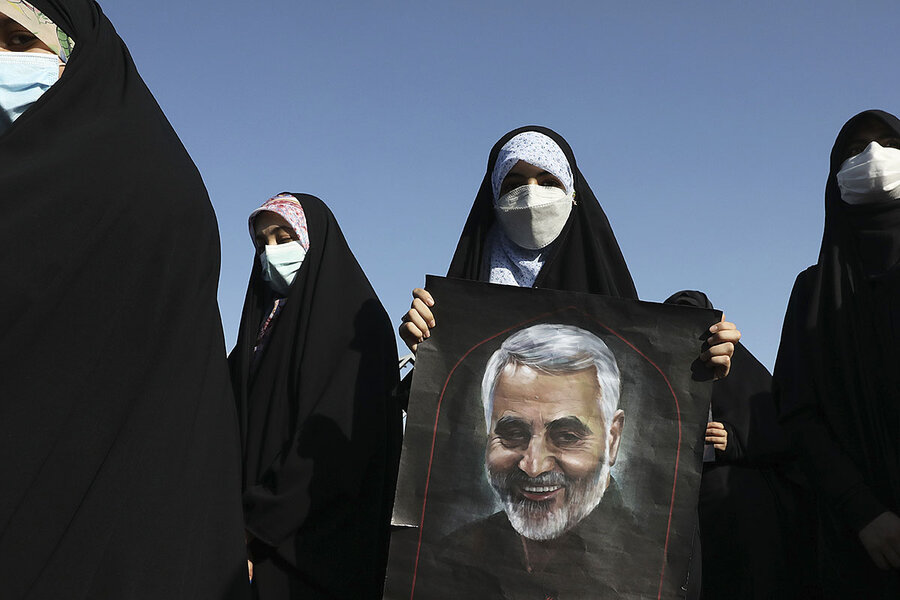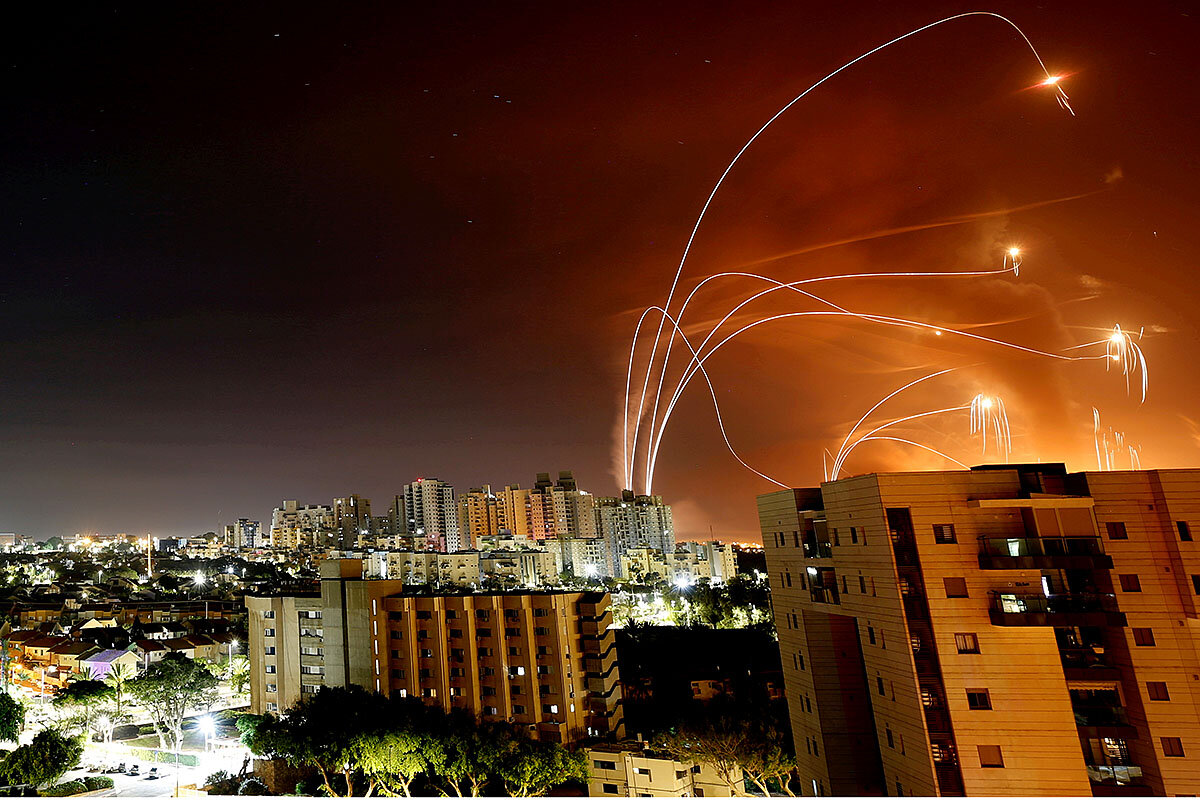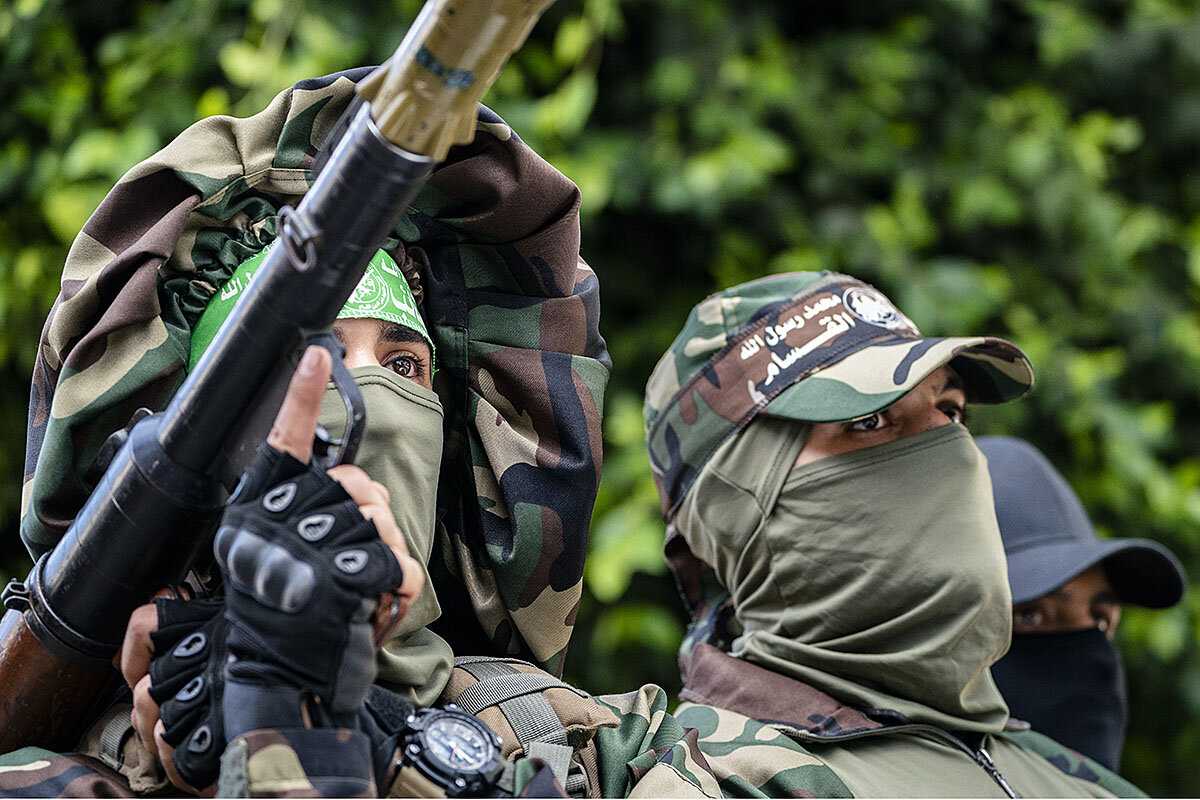From Tehran to Jerusalem via Gaza: A Hamas rocket's trajectory
Loading...
| London
When Israel and the militant Islamic group Hamas agreed to a cease-fire last week, ending 11 days of airstrikes and rocket fire, both sides claimed victory.
So did Iran.
Hamas’ patrons in Tehran have shepherded the radical Palestinian organization’s weapons program for over two decades. This week they celebrated the recent fighting as evidence of another leap in Hamas’ military capabilities.
Why We Wrote This
Hamas could never have fired so many rockets at Israel during the recent fighting without technical help from Iran. The militant Islamist group’s newfound skills could force Israel to rethink its Gaza strategy.
“The reality is that a new Palestine has emerged which is not fighting with rocks, but with rockets,” boasted Hossein Salami, commander of Iran’s Islamic Revolutionary Guards.
The unprecedented barrage that Hamas and the smaller Palestinian Islamic Jihad (PIJ) fired at Israel fits a pattern that Iran is seeking to inscribe across the Middle East through its support for Hezbollah in Lebanon, Houthi rebels in Yemen, and militias in Iraq and Syria.
Iran “sees a trajectory where [with] every round of confrontation, the deterrence potential and the military power of its allies on the ground is increased,” says Fabian Hinz, co-author of a recent report for the London-based International Institute for Strategic Studies (IISS) on Iran’s missile and drone programs.
In Gaza, that could force Israel to rethink its strategy.
Israel undoubtedly did enormous damage to Hamas installations in the Gaza Strip, hitting 1,500 targets during the recent hostilities. Its airstrikes on Hamas’ secret rocket-building factories displayed its intelligence prowess, and it shocked Hamas by killing a number of its military commanders in hiding, while destroying some 60 miles of underground tunnels known as the “Hamas metro.”
But the progress that Hamas armorers have made since the last sizable Israel-Hamas war in 2014 was startling. Over the 11 days of the recent conflict they shot 4,360 rockets at Israel, more than quadrupling the rate at which they fired during two months of hostilities in 2014, and for the first time they targeted Jerusalem, previously out of range.
On a number of occasions, the intensity of the indiscriminate rocket barrages – the rockets have no guidance systems – briefly overwhelmed Israel’s Iron Dome air defense.
None of this would have been possible without Iranian assistance, says Dr. Raz Zimmt, an Iran expert at the Institute for National Security Studies at Tel Aviv University.
“In the past they certainly used Iranian-made rockets,” says Dr. Zimmt. “The trend we’re seeing, not just in Gaza, but also with Hezbollah and with the Houthis in Yemen, is that they’re moving from buying weapons from Iran to using technology from Iran to manufacture them domestically.”
The IISS report notes that Hamas has moved beyond “very primitive” early designs to longer-range rockets, “massively aided” by Iran. It cites leaked intelligence documents showing that Iranian experts trained PIJ technicians in the production of solid rocket fuel chemicals, and even tried to set up a factory in Syria to make them.
“We do say this loud and clear … Iranians are the ones who support us with weapons, money, and food,” a senior PIJ official, Ramez al-Halabi, told an Iraqi TV channel on the eve of the fight.
After the battle, Hamas political chief Ismail Haniyeh said in a televised speech that Iran “did not hold back money, weapons, and technical support. Thanks.”
Hamas and the PIJ are elements of the Iranian-led “Axis of Resistance” against Israel and U.S. influence in the Middle East; fellow participants include the Shiite Muslim Hezbollah organization in Lebanon, which also briefly joined in the recent conflict by firing a few of its rockets at Israel, and Houthi rebels in Yemen, who have fired Iranian-supplied or Iranian-designed missiles deep into neighboring Saudi Arabia.
The model for Hamas’ development, says Mr. Hinz, is Hezbollah’s transformation, with extensive Iranian financial and technical help, from a “rag-tag band of Shia militiamen” in the 1980s, when Israel enjoyed free rein in southern Lebanon, into “a major military force that deters large Israeli action,” and whose rockets can reach anywhere in Israel.
“That’s quite a success story, and I think it’s the kind of prism through which Iranian leaders see the rocket arsenals of their allies and proxies,” says Mr. Hinz.
Hezbollah is believed to have an arsenal of 150,000 rockets and missiles, with greater range and accuracy than anything Hamas can claim. While the Gaza Strip is sealed off by Israel and Egypt, precluding most smuggling operations, Iranian convoys can carry weapons overland to their proxy militias in Iraq and Syria – and through them to their allies in Lebanon – and by sea to Yemen.
“When [Iran] sees the situation of the resistance camp today, in comparison to what it used to be five or 10 years ago, the bottom line is this might be quite impressive for them, despite all the problems,” says Dr. Zimmt.
Those problems include a string of humiliations the Islamic Republic has suffered at the hands of Israel’s Mossad intelligence agency, including the assassination of its top nuclear scientist last November, and sabotage attacks on its nuclear sites.
Hamas appears to still be receiving some smuggled weapons from Iran that evade Israeli naval patrols along the Gaza coast: A documentary film that aired last September on Al-Jazeera TV showed members of Hamas’ armed wing, the Al-Qassam Brigades, unpacking Iranian Fajr-5 missiles.
The Israel Defense Forces are reported to have detected waterproofed packages of weapons, some floated in barrels, dropped offshore by speedboats operating from Egypt and Lebanon at points where sea currents and prevailing winds carry them to the Gaza coast.
But the bulk of the rockets Hamas fired during the most recent hostilities were manufactured in the Gaza Strip, foreign analysts agree, sometimes using unexploded Israeli ordnance left after the 2014 war or water pipes salvaged from former Jewish settlements abandoned in 2005.
The advances that Hamas has made in rocket building, revealed by the fighting earlier this month, will change Israel’s strategic calculations, analysts say.
Until now, Israel’s policy toward Gaza has been “to maintain as much quiet as possible” and to prolong the interludes between bouts of conflict, says Dr. Zimmt.
If Hamas restarts its rocket factories, though, the government would have to decide whether “to start a preventive war against Hamas and again expose all Israel to rockets coming from Gaza. Or should we just wait and do nothing?” Dr. Zimmt points out. “This is a very big dilemma in Israel.”
Such a dilemma for Israel is an achievement for Iran and Hamas, suggests Mr. Hinz. “They’ve demonstrated a capability and a willingness to escalate that definitely will influence future decision-making in Israel,” he says. “And I think that in itself is quite a victory.”









